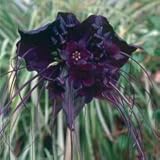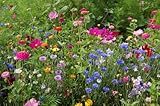Mystic Rainbow Flower - Rosa Seeds Rose - 10 Seeds - Qualityseeds4less Exclusive
- List Price:
$89.99 - Sale Price: $5.80
- Amount Saved: $84.19
- Availability: Usually ships in 24 hours
$5.80
Feature
- USDA Hardiness Zones: 3, 4, 5, 6, 7, 8, 9, 10
- Soil type: Any, Sandy, Loamy
- Bloom time: Summer
- They make a massive burst of color in your garden.
- Fragrant Flower. Grows zones: 3-10
Product Detail
- Product Dimensions: 2 x 3 x 2 inches; 0.13 pounds
- Shipping Weight: 0.13 pounds
- ASIN: B00G48V3ZS
- Item model number:
- Average Customer Review: Customer Reviews
Product Description
Roses have an undeserved reputation for being fussy, hard-to-care-for plants. But after all, they're just shrubs. Some roses do require more maintenance than others, but growing roses is something even a beginner can do.
Prune roses in early spring once the rose starts to show signs of new growth, usually in the form of tiny red buds swelling. These buds will become new branches.
Fertilize roses regularly during the growing season. Roses are hungry plants, demanding lots of nutrients for best growth and flowering. Each rose grower has his or her own favorite method. One of the easiest is to buy a slow-release granular rose food and work it into the soil so it can feed the plant all season long. Otherwise, you'll want to fertilize the rose with a liquid fertilizer every three to four weeks during the growing season (stop in early autumn) or according to package directions.
Start your roses off right by making sure you grow them in a good spot. Roses do best in full sun (at least 6 hours of direct sun a day) and well-drained soil that's rich in organic matter.
If your soil has lots of sand or clay, it's helpful to add organic matter, such as compost, before planting them.





